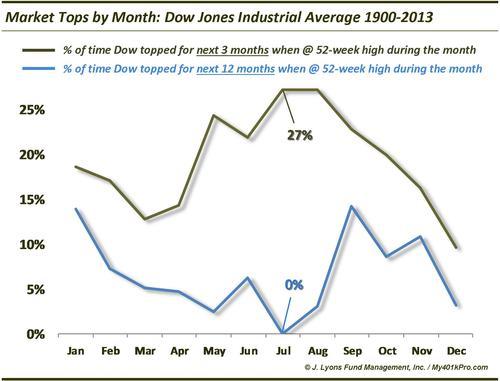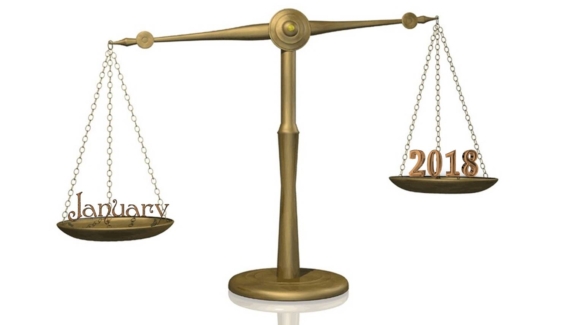ChOTD-6/30/14 3 & 12-Month Market Tops By Month: July Most Likely To Top S/T, Least Likely L/T (unprecedented)
Today’s ChOTD looks at the monthly seasonality of market tops, on a 3-month and 12-month basis. As in the past, we define a top as the market (in this case, the Dow Jones Industrial Average) trading at a 52-week high at some point during the month, then failing to exceed that high for 3 or 12 months. We last looked at these stats at the beginning of May noting that, on an absolute basis, May has formed the most 3-month tops historically, though just 1 12-month top. On a percentage basis, July has been the most “toppy” on a 3-month basis; however, the market has never formed a 12-month top in July.

Data:

As shown, July has formed a 3-month top 9 out of the 33 years in which it traded at a 52-week high. At 27%, that is tied with August for the “toppiest” over that span. However, the market has never formed a 12-month top during the 33 July’s during which it traded at a 52-week high. Therefore, if the Dow hits a new high during the next month (almost a shoo-in), it would be unprecedented for that high to hold for 12 months.
We will remind readers that seasonality is merely one small ingredient in the market’s movement. Furthermore, historical tendencies do not necessarily exert any influence at all in a given month, year, etc. For instance, while May has formed the most 3-month tops historically, obviously 2014 did not prove to be one of them. Additionally, though July’s % of 3-month tops is the highest of any month, such tops still occur less than 1 in 3 times that the market trades at a new high during the month.
All this is to say: we are not forecasting a 3-month top in July. Nor are we forecasting that the market will definitely make a new high over the 12 months following a new July high. In fact, we are not forecasting anything at all. These are merely statistics showing how the market has behaved in the past. If readers find value in them, all the better. However, we are not forecasting nor recommending anything based off of the statistics. While that point should go without saying, experience (including very recent experience) tells us otherwise regarding others’ interpretations or inferences based on the posting of a single chart or table.

